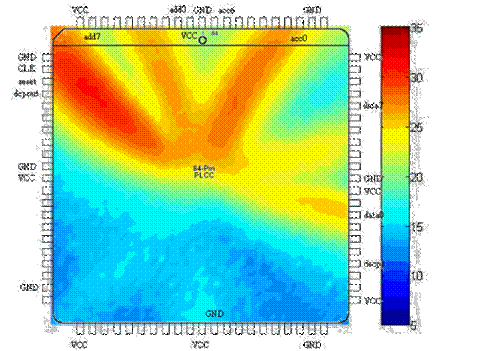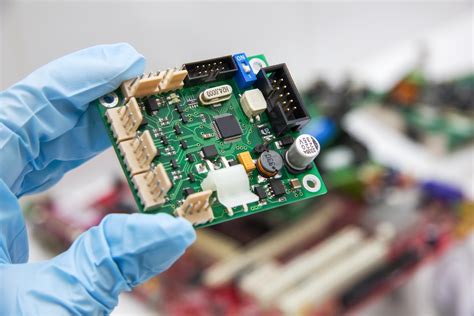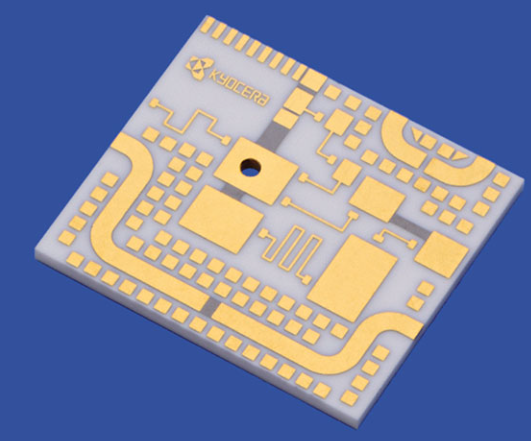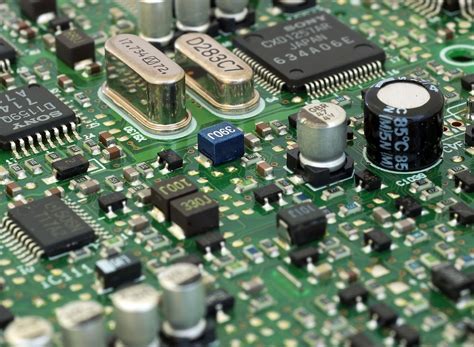High frequency material
Understanding High Frequency Materials: Properties and Applications
High frequency materials are integral to the advancement of modern technology, playing a crucial role in various applications ranging from telecommunications to medical devices. These materials are specifically designed to operate efficiently at high frequencies, typically in the range of megahertz (MHz) to gigahertz (GHz). Understanding the properties and applications of high frequency materials is essential for engineers and scientists who are at the forefront of developing cutting-edge technologies.
To begin with, the fundamental properties of high frequency materials are characterized by their dielectric constant, loss tangent, and thermal stability.
The dielectric constant, also known as relative permittivity, is a measure of a material’s ability to store electrical energy in an electric field. For high frequency applications, materials with a low dielectric constant are often preferred as they enable faster signal propagation and reduce signal loss. Additionally, the loss tangent, which quantifies the inherent energy dissipation within the material, is a critical parameter. Materials with a low loss tangent are desirable because they minimize energy loss, thereby enhancing the efficiency of high frequency circuits.
Moreover, thermal stability is another vital property of high frequency materials.
As electronic devices operate at high frequencies, they tend to generate significant amounts of heat. Therefore, materials that can withstand high temperatures without degrading are essential to ensure the reliability and longevity of these devices. This is particularly important in applications such as satellite communications and radar systems, where consistent performance is paramount.
Transitioning to the applications of high frequency materials, one of the most prominent areas is in the field of telecommunications.
With the ever-increasing demand for faster data transmission and higher bandwidth, high frequency materials are indispensable in the design and manufacture of components such as antennas, filters, and circuit boards. These materials enable the efficient transmission and reception of signals, thereby facilitating seamless communication across vast distances. Furthermore, the advent of 5G technology has further underscored the importance of high frequency materials, as they are crucial in supporting the higher frequencies and data rates associated with this next-generation network.
In addition to telecommunications, high frequency materials find significant applications in the medical field.
For instance, they are used in the development of medical imaging devices such as MRI machines and ultrasound equipment. These devices rely on high frequency signals to produce detailed images of the human body, aiding in accurate diagnosis and treatment planning. The use of high frequency materials in these applications ensures that the signals are transmitted with minimal loss and distortion, thereby enhancing the quality of the images produced.
Furthermore, high frequency materials are also employed in the automotive industry, particularly in advanced driver-assistance systems (ADAS) and vehicle-to-everything (V2X) communication systems. These systems rely on high frequency signals to detect obstacles, communicate with other vehicles, and provide real-time data to enhance vehicle safety and efficiency. The use of high frequency materials in these applications ensures that the signals are transmitted reliably, even in challenging environments.
In conclusion, high frequency materials are a cornerstone of modern technology, with their unique properties enabling a wide range of applications across various industries. As technology continues to evolve, the demand for materials that can operate efficiently at high frequencies will only increase. Therefore, ongoing research and development in this field are essential to unlock new possibilities and drive innovation in the years to come.
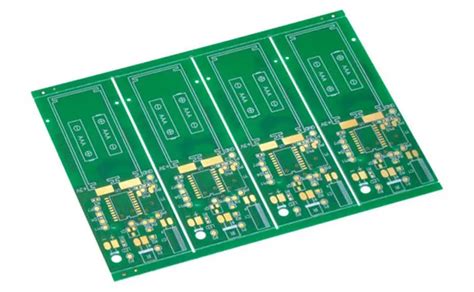
Innovations in High Frequency Material Technology
In recent years, the field of high frequency material technology has witnessed remarkable advancements, driven by the increasing demand for faster and more efficient electronic devices. As the world becomes more interconnected, the need for materials that can support high frequency applications, such as those found in telecommunications, radar systems, and advanced computing, has become paramount. These materials are crucial in ensuring that devices can operate at higher speeds while maintaining reliability and performance.
One of the key innovations in high frequency material technology is the development of advanced composite materials.
These materials are engineered to possess specific electrical, thermal, and mechanical properties that make them ideal for high frequency applications. For instance, the integration of ceramic fillers into polymer matrices has led to the creation of composites with enhanced dielectric properties. These composites are particularly beneficial in the fabrication of printed circuit boards (PCBs) used in high frequency devices, as they help minimize signal loss and improve overall device performance.
Moreover, the advent of nanotechnology has further propelled the development of high frequency materials.
By manipulating materials at the nanoscale, researchers have been able to create materials with unprecedented properties. For example, the incorporation of carbon nanotubes and graphene into traditional materials has resulted in composites with superior electrical conductivity and thermal management capabilities. These nanomaterials are not only lightweight but also exhibit exceptional strength, making them suitable for a wide range of high frequency applications.
In addition to composite materials, the exploration of metamaterials has opened new avenues in high frequency technology.
Metamaterials are artificially structured materials that exhibit properties not found in naturally occurring materials. By designing these materials to interact with electromagnetic waves in specific ways, scientists have been able to achieve phenomena such as negative refraction and cloaking. These properties have significant implications for high frequency applications, particularly in the development of advanced antennas and waveguides that can operate at higher efficiencies and with greater precision.
Furthermore, the push for miniaturization in electronic devices has necessitated the development of materials that can support high frequency operations in smaller form factors. This has led to innovations in thin film technologies, where materials are deposited in ultra-thin layers to create components that are both compact and efficient. These thin films are integral to the production of microelectromechanical systems (MEMS) and other miniaturized devices that require high frequency capabilities.
As the demand for high frequency materials continues to grow, sustainability has become an important consideration in their development.
Researchers are increasingly focusing on creating materials that are not only high-performing but also environmentally friendly. This includes the use of bio-based polymers and the recycling of electronic waste to recover valuable materials for reuse in high frequency applications. By prioritizing sustainability, the industry aims to reduce its environmental impact while meeting the technological needs of the future.
In conclusion, the innovations in high frequency material technology are shaping the future of electronics and telecommunications. Through the development of advanced composites, nanomaterials, metamaterials, and thin film technologies, researchers are pushing the boundaries of what is possible in high frequency applications. As these materials continue to evolve, they will play a crucial role in enabling the next generation of high-speed, high-performance devices that are essential for our increasingly connected world..

Challenges in Manufacturing High Frequency Materials
The manufacturing of high-frequency materials presents a unique set of challenges that are critical to address in order to meet the growing demands of modern technology. As the world becomes increasingly reliant on high-speed communication systems, the need for materials that can efficiently handle high-frequency signals is more pressing than ever. These materials are essential in a variety of applications, including telecommunications, radar systems, and advanced computing technologies. However, the path to producing these materials is fraught with technical and logistical hurdles that manufacturers must overcome.
One of the primary challenges in manufacturing high-frequency materials is achieving the necessary electrical properties.
High-frequency applications require materials with low dielectric loss and high dielectric constant to ensure signal integrity and minimize energy dissipation. This necessitates precise control over the material’s composition and structure at the molecular level. Manufacturers must employ advanced techniques such as chemical vapor deposition and molecular beam epitaxy to achieve the desired properties. These processes, while effective, are complex and require significant expertise and investment in specialized equipment.
In addition to the technical challenges, there are also significant material selection issues.
The materials used in high-frequency applications must not only possess the right electrical properties but also exhibit stability under varying environmental conditions. This includes resistance to temperature fluctuations, humidity, and mechanical stress. Finding materials that meet all these criteria is a daunting task, as it often involves a trade-off between different properties. For instance, a material with excellent electrical performance might lack the necessary thermal stability, necessitating further research and development to find a suitable compromise.
Moreover, the manufacturing process itself can introduce defects that compromise the performance of high-frequency materials.
Even minor imperfections at the microscopic level can lead to significant signal degradation, making quality control a critical aspect of the manufacturing process. Advanced inspection techniques, such as scanning electron microscopy and X-ray diffraction, are employed to detect and rectify these defects. However, these methods are time-consuming and add to the overall cost of production, posing an economic challenge for manufacturers.
Another significant challenge is scalability.
While it is possible to produce high-frequency materials in small quantities for research and development purposes, scaling up production to meet commercial demands is a different matter entirely. The processes used in manufacturing these materials are often not easily adaptable to large-scale production, requiring significant modifications and optimizations. This scalability issue is compounded by the need for consistency in material properties across large batches, which is difficult to achieve given the precision required in the manufacturing process.
Furthermore, the rapid pace of technological advancement means that manufacturers must continuously innovate to keep up with new requirements.
As devices become more sophisticated and operate at even higher frequencies, the demand for materials with even better performance characteristics increases. This necessitates ongoing research and development efforts, which require substantial investment in both time and resources.
In conclusion, the manufacturing of high-frequency materials is a complex endeavor that involves overcoming numerous technical, material, and economic challenges. While significant progress has been made, ongoing innovation and investment are essential to meet the evolving demands of high-frequency applications. As technology continues to advance, the ability to efficiently produce high-quality high-frequency materials will be crucial in enabling the next generation of communication and computing technologies.

Future Trends in High Frequency Material Development
The development of high-frequency materials is poised to revolutionize various industries, particularly telecommunications, aerospace, and electronics. As the demand for faster and more efficient communication systems grows, the need for materials that can operate effectively at high frequencies becomes increasingly critical. High-frequency materials are essential for the development of devices that operate in the gigahertz (GHz) and terahertz (THz) ranges, which are crucial for next-generation technologies such as 5G and beyond.
One of the primary drivers of innovation in high-frequency materials is the telecommunications industry.
With the rollout of 5G networks, there is a pressing need for materials that can support higher data rates and lower latency. These materials must exhibit low dielectric loss, high thermal stability, and excellent mechanical properties to ensure the reliability and efficiency of communication devices. Consequently, researchers are exploring advanced composites and polymers that can meet these stringent requirements. For instance, materials such as liquid crystal polymers (LCPs) and polytetrafluoroethylene (PTFE) are gaining attention due to their favorable dielectric properties and ease of processing.
In addition to telecommunications, the aerospace industry is also a significant beneficiary of advancements in high-frequency materials.
The development of radar and satellite communication systems relies heavily on materials that can withstand extreme environmental conditions while maintaining high performance. High-frequency materials used in these applications must possess exceptional thermal and mechanical stability, as well as resistance to radiation. As a result, there is a growing interest in ceramic-based materials and metal matrix composites, which offer the necessary durability and performance characteristics.
Moreover, the electronics industry is experiencing a paradigm shift with the miniaturization of components and the push towards higher operating frequencies.
This trend necessitates the use of materials that can support the increased power densities and thermal loads associated with high-frequency operation. Advanced substrates and packaging materials are being developed to address these challenges, with a focus on improving thermal management and reducing signal loss. Innovations in this area include the use of nanomaterials and advanced manufacturing techniques, such as additive manufacturing, to create complex structures with enhanced properties.
As we look to the future, the development of high-frequency materials will continue to be driven by the need for more efficient and reliable systems.
Emerging technologies, such as the Internet of Things (IoT) and autonomous vehicles, will further accelerate the demand for materials that can operate at high frequencies. Additionally, the exploration of new frequency bands, such as the millimeter-wave and terahertz ranges, will open up new possibilities for high-frequency material applications.
In conclusion, the future trends in high-frequency material development are characterized by a focus on enhancing performance, reliability, and efficiency across various industries. The ongoing research and innovation in this field are expected to yield materials that can meet the demands of next-generation technologies, paving the way for advancements in telecommunications, aerospace, and electronics. As these materials continue to evolve, they will play a pivotal role in shaping the technological landscape of the future, enabling faster, more efficient, and more reliable systems that can meet the ever-growing demands of modern society.


